
Introduction:
Session hijacking is attack in which an attacker intercepts and stealth an active session between two end point, often between a user and a web application. This typically include stealing token and cookies. Which are then used for authenticate and authorized the user during a session. In this project we first stole victim cookies and then then it to attacker machine. The attacker first use Wireshark to capture network traffic between victim and the website. Once the cookies are captured the attacker send it to their own machine using a tool. Finally, attacker inserts the stolen session cookie into their own web browser. By doing so, they effectively impersonate the victim’s session on the targeted website.
Tools Required:
Following are the Tools used in this Project:
- Virtual Box
- Window 10
- Kali Linux VM.
- Wireshark.
- MySQL.
- Apache2
- DVWA (Damn Vulnerable Web Application).
Installing Tool:
We need to install DVWA in our kali machine. It’s insecure web application designed to ne used for leaning and testing tool for Security. It is legal and safe environment to explore and understand common web application vulnerabilities.
First of all, we go to web server directory using.
cd /var/www/htmlNow we clone DVWA using git clone command.
sudo git clone https://github.com/digininja/DVWA.gitGiving executable permission to DVWA directory.
sudo chmod -R 777 DVWANow we use cd command to go inside config directory with in DVWA.
cd DVWA/configNow make copy of config.inc.php.dist file in same directory because original may be use in future.
sudo cp config.inc.php.dist config.inc.phpNow we open config.inc.php in no terminal and change default db_user to admin and db_password to password.
sudo nano config.inc.php
DVWA configuration has been completed.
Now we set database for DVWA.
sudo service mysql startNow login into mysql server as a root user.
sudo mysql -u root -pCreate database for DVWA.
create database dvwaBecause in configuration file we set the database name dvwa.
Now we create user in database.
create user 'admin'@'127.0.0.1' identified by 'password';Here we grant all privilege to user.
grant all privileges on dvwa.* to 'admin'@'127.0.0.1';Exit for mysql server using exit command.
Now we start apache2 service on kali machine.
sudo service apache2 start.Now we have to do some changes in php configuration.
cd /etc/php/<php version>/apache2
nano php.iniIn this file turn ON allow_url_fopen and allow_url_include.
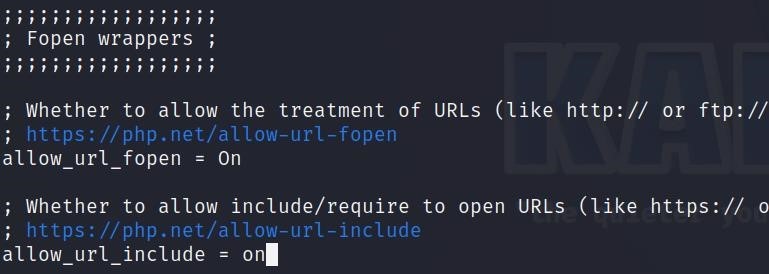
Now DVWM is install and configure in our kali machine we can simple check it by entering in URL 127.0.0.1/DVWA.

Enter user name and password as set before, i.e. admin and password.
Mechanism of session hijacking practical:
The first step in Session Hijacking is stealing the victim’s cookie, which can be done in many ways. We will capture packets between a client and the webserver with Wireshark. Then, we’ll capture the victim’s cookie and send it to the attacker.
Open Firefox in Kali Linux. In Firefox, type the following into the URL bar and press Enter:
http://<Machine_ip>/DVWA/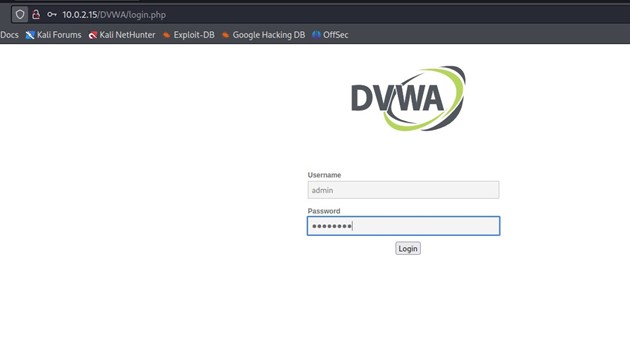
Type Username: admin and Password: password.
Scroll to the bottom of the DVWA Welcome page and confirm you are logged in as Username: admin
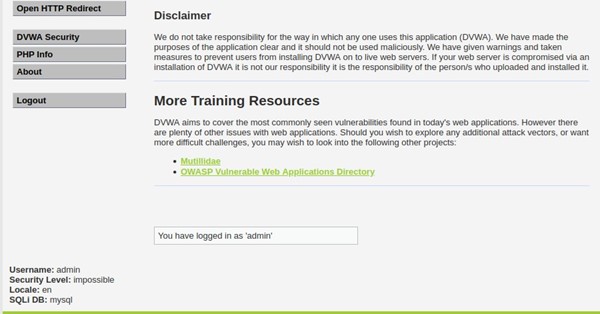
Open Wireshark in Kali Linux and select the shark fin to Start capturing packets
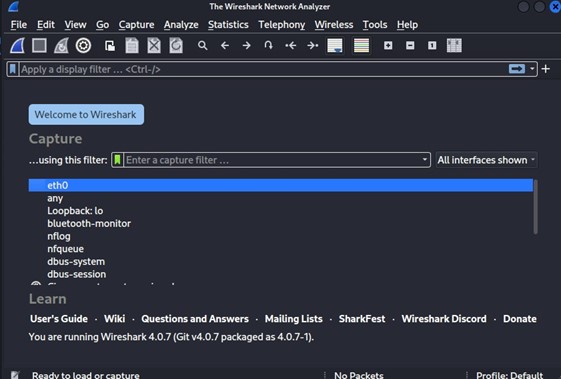
On the DVWA application, in quick succession, select the below three different pages from the left-side menu, one after the other:
- Brute Force
- CSRF
- File Upload
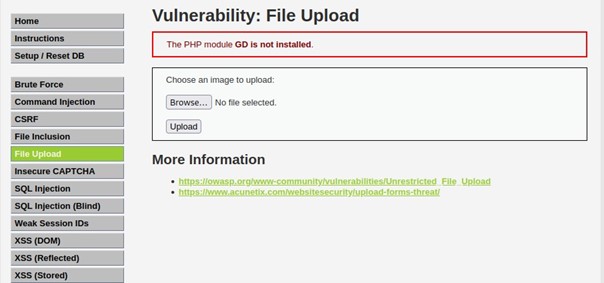
The objective is to select multiple pages in quick succession so that the GET requests that initiate the page change are grouped in Wireshark and are easy to recognize.
In Wireshark, select the Stop capturing packets. Type the following into the Apply a display filter field and press Enter:
ip.dst== <Machine_ip>

Search in the upper-frame Info column for a GET request. Select the GET request packet.
In the middle frame, expand the Hypertext Transfer Protocol element.

Every new session generates a new cookie from the web server (displayed here as Cookie pair:
PHPSESSID=<YOUR COOKIE>
In the middle frame, right-click on the Cookie pair: PHPSESSID line, then select Copy > as Printable Text
Create file and open it in nano editor.
cd /var/www/html/share
sudo nano cookiesPaste cookie content in the created file.
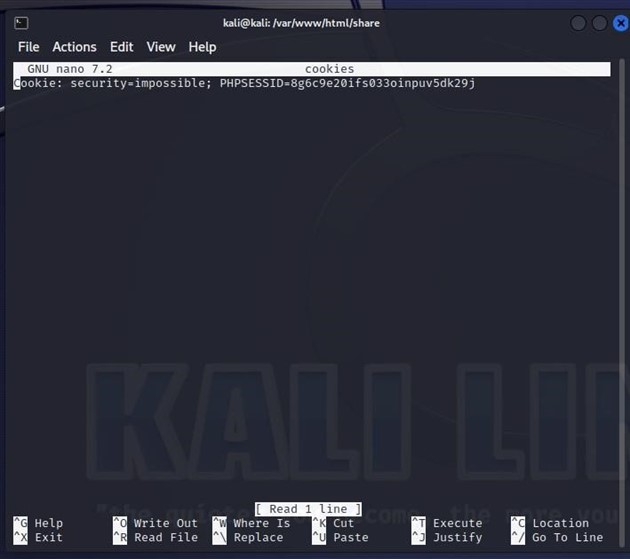
In Windows 10, open the Microsoft Edge browser and paste <Machine_IP>/share/. This will open
a page containing various files, including the cookies file.
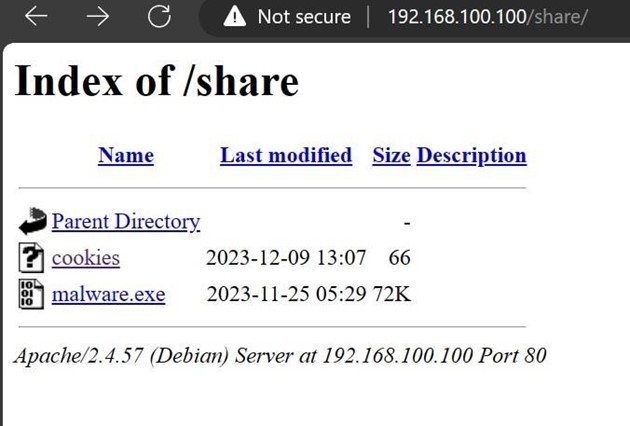
Click on the cookie file, then navigate to the three dots, and in the cookies area, paste the copied cookies, as shown in the figure below.
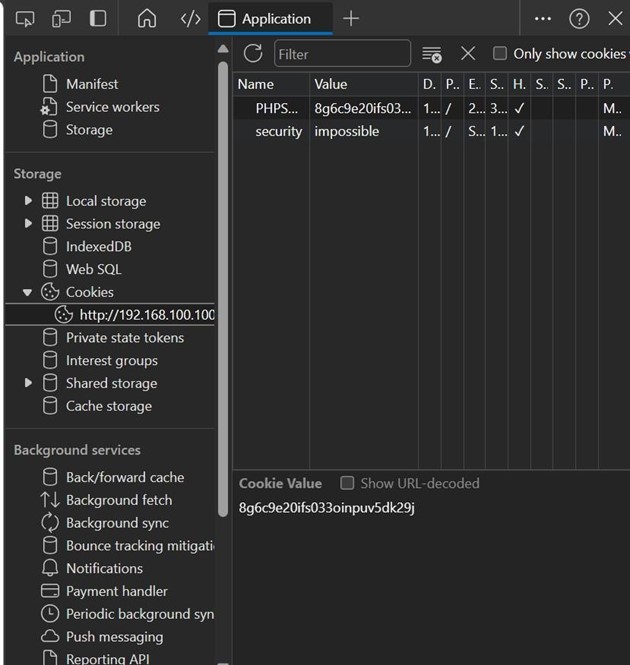
Now, paste the IP-address/DVWA/index.php again in the Microsoft Edge browser. It will log in to
victim account without asking for a username and password.


Conclusion:
The mechanism of session hijacking involved capturing packets between a client and a web server using Wireshark, extracting the victim’s cookie, and then using that cookie to impersonate the victim’s session on a targeted website. The steps included opening Firefox in Kali Linux, logging into DVWA with specific credentials, capturing packets with Wireshark, and copying the victim’s cookie for later use.
In the practical demonstration, it was shown how an attacker, by using the victim’s captured cookie, could log in to the victim’s account on the DVWA website without requiring a username and password. The steps involved opening Microsoft Edge in Windows 10, navigating to a specific URL, and pasting the copied cookies to gain unauthorized access.
The project successfully demonstrated the vulnerability of web applications to session hijacking attacks and highlighted the importance of securing sessions, especially through measures such as encryption and secure cookie handling.